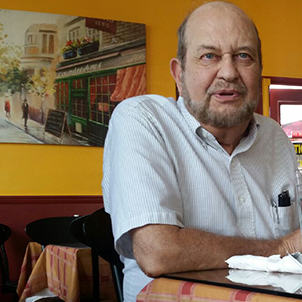The California Public Utilities Commission now says it wants closure on its most contentious, most questionable decision of the last few decades.
This comes more than four years after a clandestine meeting between the commission’s then-president Michael Peevey and officials of the Southern California Edison Co. set parameters for “settling” the division of costs for shutting down the San Onofre Nuclear Generating Station, on the coast near the Orange-San Diego county line.
The so-called settlement among the PUC, Edison, San Onofre part-owner San Diego Gas & Electric and a so-called consumer group called The Utility Reform Network (saddled electricity customers with about 70 per cent of the expense of the 2012 shutdown, caused by an Edison blunder. That came to $3.3 billion out of the $4.7 billion total cost.
Edison tried to recoup some costs of the shutdown by suing the maker of the failed steam generator that caused the problem, Japan’s Mitsubishi Heavy Industries for hundreds of millions. But the utility won only a fraction of what it sought. So a promise in the San Onofre settlement giving half the lawsuit proceeds to consumers became essentially meaningless.
Even before that court decision, the commission in May 2016 conceded there may have been something fishy about the decision spurred by that secret meeting, which violated even the PUC’s own loose rules.
It’s taken since then for the commission to schedule a new set of public hearings – the first ever in the case – at which consumers and others can speak out about the possibly illegal settlement, which came before any hearings on the issue could be held.
“This matter is long overdue for resolution,” wrote current PUC President Michael Picker and PUC Judge Darcie Houck in the order setting up the hearings.
You don’t say, Mr. Picker. Mr. Picker, then merely one of the five commission members, voted for the settlement, never saying whether he knew of the irregular meeting between Edison and Mr. Peevey, not coincidentally a former Edison president. He’s refused ever since to divulge why he voted yes.
Now ordinary citizens can at last speak out. Between now and the end of January, opinions and new information can be sent to the PUC public advisor at 505 Van Ness St., San Francisco, CA 94102. Public hearings start in Los Angeles in February, with more the next month in San Diego. A supposedly final PUC decision will come later.
Clearly, the commission wants this stain on its record to fade away at last, after it has inflamed public opinion about the agency for years. At the same time, Edison and SDG&E will fight to keep the settlement as is.
The PUC also wants closure on the related criminal investigation that’s been hanging over it since subpoenas and search warrants were issued and carried out against it and Peevey in early 2014 because of their actions in this case.
Quiet Side of Becerra
The investigation began under former Attorney General Kamala Harris, now a U.S. senator, and may have continued under her appointed successor Xavier Becerra. Mr. Becerra’s office has refused to answer questions from this column and others about the investigation, not even indicating whether it is still ongoing.
“The Attorney General’s office has sent mixed signals concerning the status of its investigation,” griped PUC lawyer Pamela Naughton in a court filing.
Ms. Naughton is among the private criminal lawyers hired by the PUC at public expense of more than $10 million because it was up against the attorney general, who normally represents the commission. Neither the PUC nor anyone else has ever cited any law allowing the PUC to hire private lawyers with public money to defend actions by individual commissioners or staffers. This may be another PUC scandal waiting to break.
Ms. Naughton, no matter the legality of her retainer, is correct that the public deserves to know whether there is still an investigation. After all, no one has yet been punished, even though the sometimes comedic PUC did absurdly fine Edison $16 million in 2015 for not reporting meetings with the commission’s own members.
The bottom line: Closure is long overdue on San Onofre, but not at the expense of whitewashing any part of this plainly unjust use of public authority and funds.
Mr. Elias is author of the current book “The Burzynski Breakthrough: The Most Promising Cancer Treatment and the Government’s Campaign to Squelch It,” now available in an updated third edition. His email address is www.tdelias@aol.com

